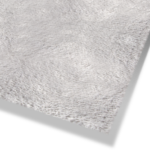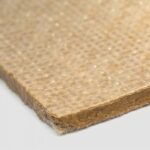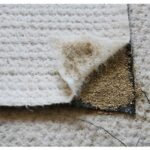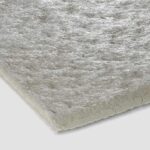Geosynthetic Clay Liner (GCL)








At LRK Geovision, we are engaged in offering our clients, Geosynthetic Clay Liners or GCLs which are a type of geocomposites. These are prefabricated with a bentonite clay layer, which is incorporated between a top and bottom geotextile layer or bonded to a geomembrane or single layer of geotextile. For increasing internal shear resistance, our geotextile-encased clay liners are stitched or needle-punched through the bentonite core.
Geosynthetic clay coatings were first used in a solid waste collection center. This product consists of a mixture of bentonite clay between two geotextiles. Geosynthetic clay coatings are also called “clay liners”, “bentonite liners”, “bentonite mats”, and “prefabricated bentonite clay liners”.
Geosynthetic clay coatings are used as a hydraulic barrier against water and other liquid materials. As a hydraulic barrier, geosynthetic clay coatings can be used instead of compressed clay layers. The main advantages of geosynthetic clay coatings are; limited thickness reduced the different settlements under its ground or on the waste material, easy placement, and low cost.
Applications Of Geosynthetic Clay Liner Or GCL
Canals, stormwater impoundments, and wetlands
Secondary containment
Highway and civil
Landfill liners
Landfill caps
Mining
Ponds
Uses Of Geosynthetic Clay Liner Or GCL
In stuffing, as the first coating layer under geomembranes.
In stuffing, as a secondary coating layer under geomembranes.
In stuffing, under geomembranes, and above the clay.
In vertical stud swags, adjacent to geomembrane.
In water pools, as a composite coating underwater in geomembranes.
As a layer of protection against geomembranes, rough sums.
In the creation of dams to surface waters.
In the creation of dams to surface waters, as a composite coating under geomembranes.
As a second coating layer in underground storage.
FAQ's
Geosynthetic Clay Liners or GCLs are geotextile and bentonite composites made of sodium bentonite sandwiched between two layers of geotextile and engineered for a variety of environmental containment applications. The geotextiles offer a long-lasting resistance to physical or chemical break-down in harsh elements, and the bentonite’s high swelling capacity and low permeability provide an effective hydraulic seal.
– GCLs are a low-cost replacement for compacted clay soil.
– GCLs are quicker to install, even when the clay is available on site.
– When the GCLs are hydrated under confinement, the bentonite in it swells to make a low permeability layer of clay with appropriate hydraulic protection to that of several feet of compacted clay.
– GCLs are quicker to install, even when the clay is available on site.
– When the GCLs are hydrated under confinement, the bentonite in it swells to make a low permeability layer of clay with appropriate hydraulic protection to that of several feet of compacted clay.
1.Excavate your area for lining
2.Prepare the area for liner installation
3.Install the geosynthetic clay liners.
2.Prepare the area for liner installation
3.Install the geosynthetic clay liners.
1. Poor water retention capacity in soils.
2. Hazardous material, solid waste from livestock, and petroleum product penetrations.
3. Contamination of soil by hazardous materials.
4. Air/gas trapped under the liner from geothermic activity can be released, unlike traditional liners.
5. GCLs have a swell index compared to other clays, if it is punctured it will self-seal any holes, punctures, or tears in the liners.
2. Hazardous material, solid waste from livestock, and petroleum product penetrations.
3. Contamination of soil by hazardous materials.
4. Air/gas trapped under the liner from geothermic activity can be released, unlike traditional liners.
5. GCLs have a swell index compared to other clays, if it is punctured it will self-seal any holes, punctures, or tears in the liners.
